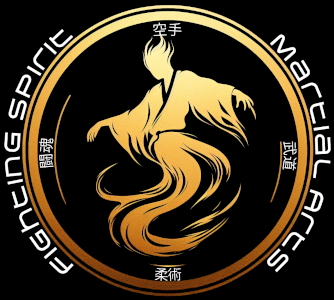Heian Shodan is a foundational kata in Chito-Ryu Karate and serves as an introduction to the Heian series. The kata consists of 21 movements, which are performed in a specific order. In this article, we will explore the history of Heian Shodan, its bunkai (hidden meanings), and its applications in self-defence situations. We will also provide a detailed breakdown of the movements of the kata, and explore possible variations and applications of each movement.
History of Heian Shodan
Heian Shodan is believed to have originated in Okinawa and was developed by Anko Itosu in the early 1900s. It was later incorporated into the Chito-Ryu curriculum by Dr. Tsuyoshi Chitose, the founder of Chito-Ryu Karate. Heian Shodan is also known as Pinan Shodan and is the first kata in the Pinan/Heian series.
Bunkai of Heian Shodan
The movements in Heian Shodan have various bunkai, or hidden meanings, which can be applied in self-defence situations. For example, the opening sequence of the kata involves blocking an incoming attack and countering with a strike to the opponent’s vital areas. The following movements involve various strikes, and blocks, which can be used to defend against different types of attacks. The bunkai of Heian Shodan emphasizes the importance of proper body mechanics and transitioning between different stances.
Applications of Heian Shodan
Heian Shodan can be used in a variety of self-defence situations. For example, the opening sequence of the kata can be used to defend against an incoming punch or strike, and to counter with a strike to the opponent’s vulnerable areas, such as the groin, solar plexus, or throat. The following movements in the kata involve various strikes, and blocks, which can be used to defend against different types of attacks, such as grabs, kicks, or multiple attackers. The bunkai of Heian Shodan emphasizes the importance of timing, distance, and proper execution of techniques.
Points to Focus On
- Proper stance: Ensure that you maintain the correct stance and posture throughout the kata. This includes keeping your feet grounded, your knees slightly bent, and your back straight.
- Focus on transitions: The movements in Heian Shodan involve transitioning between different stances, blocks, and strikes. Focus on executing these transitions smoothly and with proper timing.
- Strong blocks: The kata emphasizes the importance of strong, effective blocks. Ensure that your blocks are strong and properly positioned to defend against incoming attacks.
- Target vital areas: The kata includes strikes to the opponent’s vital areas, such as the groin, solar plexus, or throat. Focus on targeting these areas with speed and accuracy.
- Breathe properly: Proper breathing is important in karate, as it helps to enhance focus, relaxation, and energy. Breathe deeply and exhale sharply during the movements of the kata.
- Practice bunkai: In addition to practicing the movements of the kata, explore the bunkai or hidden meanings behind each movement. This will help you to understand the practical applications of the techniques and movements.
- Seek guidance from a qualified instructor: Finally, seek guidance from a qualified instructor to ensure that you are practicing Heian Shodan correctly and effectively. A qualified instructor can provide feedback, corrections, and insights into the techniques and movements of the kata.
Heian Shodan
Begin in a Horse Riding Stance facing north with the hands in the covered-fist position.
| 1 | Turn | West | Left Forward Stance, Left Low Block |
| 2 | Step | Right Forward Stance, Right Thrust Punch to the Center | |
| 3 | Turn (CC) | East | Right Forward Stance, Right Low Block followed by a Right Downward Hammer Fist |
| 4 | Step | Left Forward Stance, Left Thrust Punch to the Center | |
| 5 | Turn | North | Left Forward Stance, Left Low Block |
| 6 | Step | Right Forward Stance, Right High Block | |
| 7 | Step | Left Forward Stance, Left High Block | |
| 8 | Step | Right Forward Stance, Right High Block, KIAI! | |
| 9 | Turn (CC) | East | Left Forward Stance, Left Low Block |
| 10 | Step | Right Forward Stance, Right Thrust Punch to the Center | |
| 11 | Turn | West | Right Forward Stance, Right Low Block |
| 12 | Step | Left Forward Stance, Left Thrust Punch to the Center | |
| 13 | Turn | South | Left Forward Stance, Left Low Block |
| 14 | Step | Right Forward Stance, Right Thrust Punch to the Center | |
| 15 | Step | Left Forward Stance, Left Thrust Punch to the Center | |
| 16 | Step | Right Forward Stance, Right Thrust Punch to the Center, KIAI! | |
| 17 | Turn (CC) | East | Left Back Stance, Left Knife-Hand Block |
| 18 | Turn | North-East | Right Back Stance, Right Knife-Hand Block |
| 19 | Turn (CC) | West | Right Back Stance, Right Knife-Hand Block |
| 20 | Turn | North-West | Left Back Stance, Left Knife-Hand Block |
| 21 | Turn | North | Bring Left Foot back to Right Foot, returning to Ready Stance. |
Each movement in Heian Shodan has its own unique variations and applications, which can be explored in greater depth through further study and practice.
In conclusion, Heian Shodan is an essential kata in the Chito-Ryu curriculum and provides a strong foundation for further study in the Heian series. Its bunkai and applications in self-defence situations emphasize the practicality and effectiveness of the techniques and movements of the kata. By understanding the history, bunkai, and applications of Heian Shodan, practitioners can deepen their understanding and appreciation of Chito-Ryu Karate.
Source Notes and Citations
- “The Kata and Bunkai of Goju-Ryu Karate” by Giles Hopkins
- “The Essence of Okinawan Karate-Do” by Shoshin Nagamine
- “The Encyclopedia of Karate and Martial Arts” by Dr. A. Ratti and S. Westbrook.
